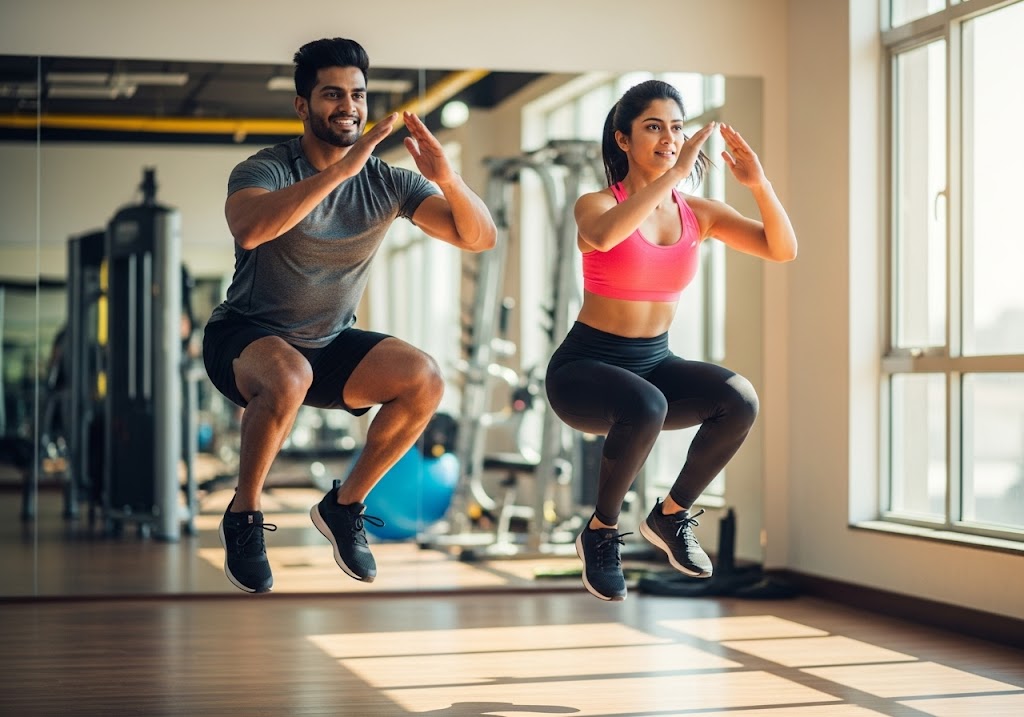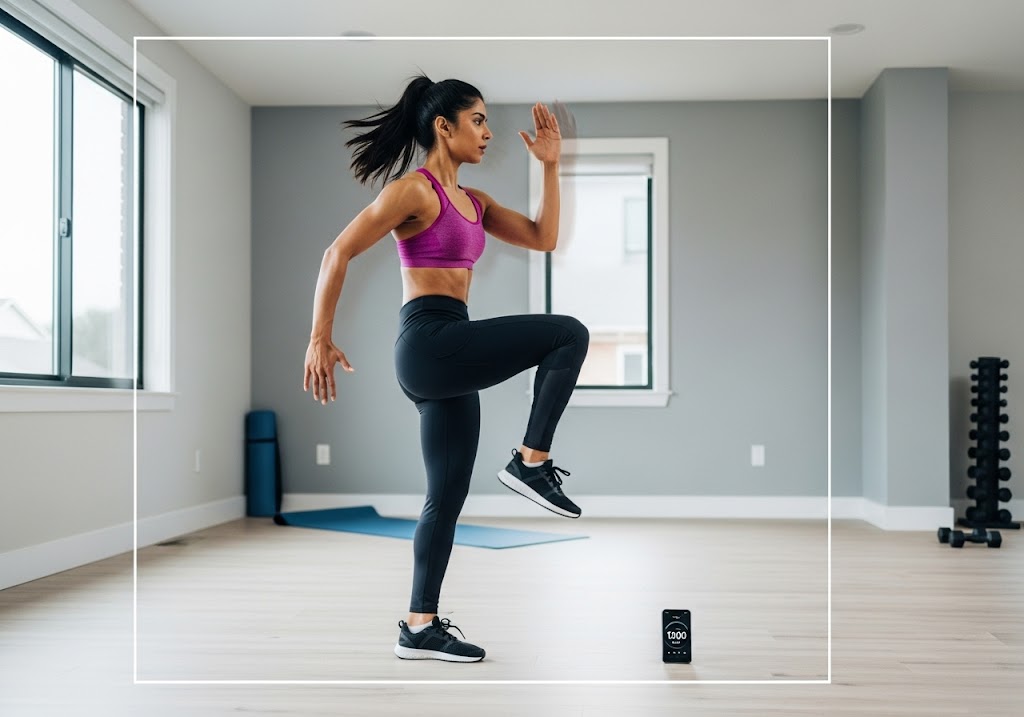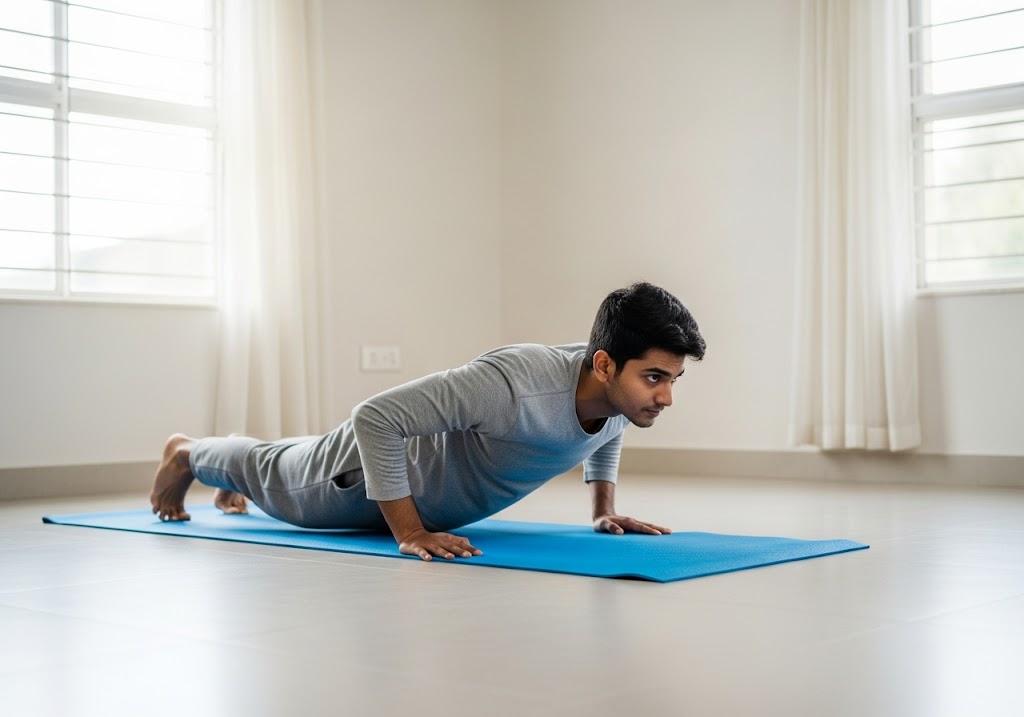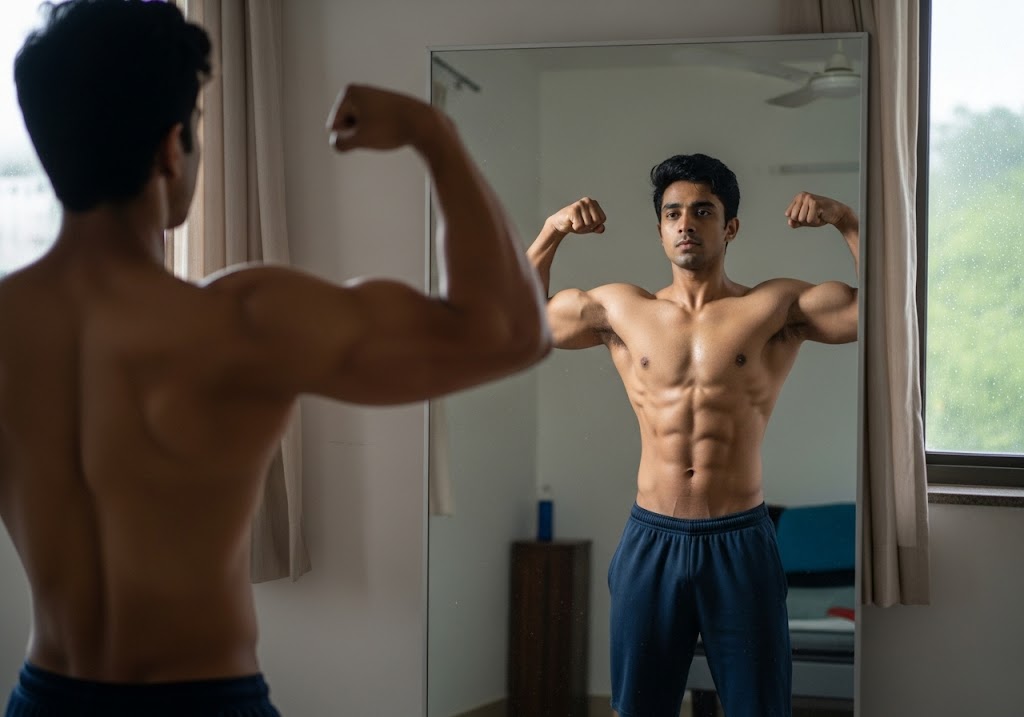Can HIIT build muscle? HIIT can build muscle through high-intensity resistance exercises but is less effective than traditional strength training for maximum muscle growth.
The question “can HIIT build muscle” has sparked considerable debate in fitness circles, with many people seeking efficient workouts that combine cardiovascular benefits with muscle-building potential. High-Intensity Interval Training offers a time-efficient approach to fitness, alternating between intense exercise bursts and recovery periods. While traditionally viewed as a cardio method, modern research reveals interesting insights about whether can HIIT build muscle effectively.
Understanding whether can HIIT build muscle requires examining the science behind muscle protein synthesis, training intensity, and recovery patterns. Can HIIT build muscle when HIIT workouts are designed properly with resistance-based movements and appropriate rest periods. However, the effectiveness of can HIIT build muscle depends on exercise selection, intensity levels, and individual training goals.
Table of Contents
Understanding Can HIIT Build Muscle
The fundamental question of can HIIT build muscle depends on how HIIT workouts are structured and what exercises are included. Traditional HIIT focuses on cardiovascular improvements through short bursts of intense activity followed by recovery periods. However, resistance-based HIIT can stimulate muscle protein synthesis when exercises target major muscle groups with sufficient intensity.
| HIIT Factor | Muscle Building Impact | Effectiveness Rating |
|---|---|---|
| Exercise Type | Resistance-based movements | High |
| Training Intensity | 80-95% maximum effort | High |
| Rest Periods | 30-90 seconds between sets | Moderate |
| Session Duration | 15-30 minutes total | High |
| Training Frequency | 3-4 times per week | Moderate |
| Progressive Overload | Limited compared to strength training | Low |
| Muscle Protein Synthesis | Moderate stimulation | Moderate |
| Recovery Time | 24-48 hours between sessions | High |
Research indicates that can HIIT build muscle when workouts incorporate compound movements like burpees, squat jumps, and mountain climbers that engage multiple muscle groups simultaneously. The high intensity stimulates muscle fibers and promotes metabolic stress, two key factors in muscle growth. However, the brief exercise duration limits the total volume of muscle-building stimulus compared to traditional resistance training, which affects how well can HIIT build muscle compared to other methods.
The science behind can HIIT build muscle shows that high-intensity intervals create favorable conditions for muscle protein synthesis through multiple pathways. When asking can HIIT build muscle effectively, research demonstrates that properly designed HIIT sessions can increase muscle-building hormones and cellular signaling pathways essential for growth.

Effects of HIIT and Muscle Growth
The relationship between HIIT and muscle growth reveals important insights about can HIIT build muscle effectively. Research shows that HIIT can stimulate muscle protein synthesis through multiple pathways, though the magnitude differs from traditional strength training approaches.
The muscle growth effects of HIIT depend on several physiological mechanisms that determine whether can HIIT build muscle optimally. High-intensity exercise creates mechanical tension, metabolic stress, and muscle damage – three key drivers of muscle hypertrophy. However, the brief duration of HIIT sessions limits the total volume of these stimuli compared to longer strength training sessions.
Studies examining can HIIT build muscle show increases in muscle fiber size, particularly in Type II (fast-twitch) fibers that respond well to high-intensity efforts. The metabolic stress from HIIT workouts triggers cellular swelling and hormonal responses that support muscle growth. Additionally, the elevated protein synthesis following HIIT sessions can last 24-48 hours, providing extended muscle-building opportunities.
Learn more about how to do plank exercise to strengthen your core for better HIIT performance.
Muscle Protein Synthesis Response
The muscle protein synthesis response helps explain can HIIT build muscle through cellular mechanisms. HIIT stimulates mTOR signaling pathways that regulate protein synthesis, though the response varies based on exercise selection and intensity levels.
Research indicates that can HIIT build muscle by elevating muscle protein synthesis rates by 15-30% for up to 48 hours post-exercise. This response occurs when HIIT workouts include resistance-based movements that create sufficient mechanical tension. The combination of high intensity and metabolic stress triggers cellular adaptations that support muscle growth, though the magnitude remains lower than traditional strength training.
Hormonal Impact on Muscle Building
Understanding hormonal responses clarifies can HIIT build muscle through endocrine system effects. HIIT workouts stimulate growth hormone, IGF-1, and testosterone release that create favorable conditions for muscle growth and recovery.
The hormonal environment following HIIT sessions supports muscle building by enhancing protein synthesis and reducing protein breakdown. Growth hormone levels can increase 200-400% after intense HIIT sessions, while testosterone shows moderate elevations. These hormonal changes help explain can HIIT build muscle even with shorter workout durations compared to traditional strength training methods.
Learn about what is foam rolling to enhance recovery between sessions and support can HIIT build muscle progress.

10 Best HIIT Workout for Muscle Building
These ten proven HIIT exercises maximize can HIIT build muscle potential through strategic movement selection and intensity programming. Each exercise targets multiple muscle groups while maintaining high metabolic demand for optimal muscle-building stimulus.
| Exercise | Primary Muscles | Duration | Rest | Difficulty | Equipment |
|---|---|---|---|---|---|
| Burpees | Full Body | 40 seconds | 20 seconds | High | None |
| Weighted Squats | Legs, Glutes | 40 seconds | 20 seconds | Moderate | Dumbbells |
| Push-up Variations | Chest, Shoulders, Triceps | 40 seconds | 20 seconds | Moderate | None |
| Mountain Climbers | Core, Shoulders | 40 seconds | 20 seconds | Moderate | None |
| Kettlebell Swings | Posterior Chain | 40 seconds | 20 seconds | High | Kettlebell |
| Jump Squats | Legs, Power | 30 seconds | 30 seconds | High | None |
| Pull-ups | Back, Biceps | 40 seconds | 20 seconds | High | Pull-up Bar |
| Thrusters | Full Body | 40 seconds | 20 seconds | High | Dumbbells |
| Battle Ropes | Arms, Core | 40 seconds | 20 seconds | High | Battle Ropes |
| Box Jumps | Legs, Power | 30 seconds | 30 seconds | High | Box/Platform |
1. Burpees
Burpees represent the ultimate full-body exercise for can HIIT build muscle goals, engaging every major muscle group while providing intense cardiovascular challenge. This compound movement combines strength, power, and endurance training elements into one efficient exercise that maximizes muscle-building potential within HIIT formats.
How to Do Burpees?
- Start standing with feet shoulder-width apart
- Drop into squat position and place hands on floor
- Jump feet back into plank position
- Perform one push-up with proper form
- Jump feet back to squat position
- Explosively jump up with arms overhead
- Land softly and immediately begin next repetition
2. Weighted Squats
Weighted squats provide excellent lower body muscle building for can HIIT build muscle workouts by adding resistance to fundamental movement patterns. This exercise targets quadriceps, glutes, and hamstrings while engaging core muscles for stability, making it ideal for muscle-building HIIT protocols.
How to Do Weighted Squats?
- Hold dumbbells at shoulder height or by sides
- Stand with feet slightly wider than shoulder-width
- Lower body by bending knees and hips simultaneously
- Keep chest up and knees tracking over toes
- Descend until thighs parallel to floor
- Drive through heels to return to starting position
- Maintain tight core throughout entire movement
3. Push-up Variations
Push-up variations offer scalable upper body training for can HIIT build muscle programs, allowing modification based on strength level while maintaining high intensity. These exercises target chest, shoulders, and triceps while engaging core muscles for stability throughout the movement pattern.
How to Do Push-up Variations?
- Start in plank position with hands slightly wider than shoulders
- Keep body in straight line from head to heels
- Lower chest toward floor while maintaining alignment
- Push back up to starting position with control
- Modify with incline, decline, or single-arm variations
- Maintain tight core and proper breathing throughout
- Adjust tempo and range based on strength level
4. Mountain Climbers
Mountain climbers deliver intense core and shoulder training for can HIIT build muscle workouts while elevating heart rate significantly. This dynamic exercise improves muscular endurance, coordination, and metabolic conditioning while targeting stabilizing muscles throughout the kinetic chain.
How to Do Mountain Climbers?
- Begin in high plank position with straight arms
- Keep core tight and body in straight line
- Drive one knee toward chest while maintaining plank
- Quickly switch legs in running motion
- Maintain steady rhythm without bouncing hips
- Keep shoulders directly over wrists throughout
- Breathe rhythmically while maintaining intensity
5. Kettlebell Swings
Kettlebell swings provide powerful posterior chain training for can HIIT build muscle workouts, targeting glutes, hamstrings, and core muscles. This ballistic exercise develops hip power, strength, and muscular endurance while providing significant metabolic challenge ideal for muscle-building HIIT sessions.
How to Do Kettlebell Swings?
- Stand with feet slightly wider than hip-width
- Hold kettlebell with both hands using overhand grip
- Hinge at hips while keeping chest up and back straight
- Swing kettlebell between legs with control
- Drive hips forward explosively to swing weight to chest height
- Let gravity bring weight back down between legs
- Maintain neutral spine throughout entire movement
6. Jump Squats
Jump squats combine strength and power training for can HIIT build muscle development, targeting leg muscles while improving explosive capability. This plyometric exercise builds functional strength, power output, and muscular endurance while providing intense metabolic stimulus for muscle growth.
How to Do Jump Squats?
- Start in standard squat position with feet hip-width apart
- Lower into squat until thighs parallel to floor
- Explode upward jumping as high as possible
- Land softly on balls of feet with bent knees
- Immediately descend into next squat repetition
- Keep chest up and core engaged throughout
- Focus on soft landings to protect joints
7. Pull-ups
Pull-ups provide superior upper body strength training for can HIIT build muscle programs, targeting back muscles, biceps, and core simultaneously. This compound exercise builds functional pulling strength while improving grip strength and muscular endurance essential for overall upper body development.
How to Do Pull-ups?
- Hang from bar with palms facing away from body
- Use grip slightly wider than shoulder-width
- Start from dead hang with arms fully extended
- Pull body up until chin clears the bar
- Lower with control to full arm extension
- Engage core to prevent swinging or momentum
- Modify with assisted variations if needed
8. Thrusters
Thrusters deliver complete full-body training for can HIIT build muscle workouts, combining squat and overhead press movements. This compound exercise engages legs, core, shoulders, and arms simultaneously while providing intense metabolic challenge ideal for time-efficient muscle building protocols.
How to Do Thrusters
- Hold dumbbells at shoulder height with elbows up
- Stand with feet shoulder-width apart
- Squat down until thighs parallel to floor
- Drive through heels while pressing weights overhead
- Lower weights back to shoulders while standing
- Maintain upright torso throughout movement
- Coordinate squat and press into fluid motion
9. Battle Ropes
Battle ropes provide intense upper body and core training for can HIIT build muscle development while improving cardiovascular conditioning. This versatile exercise targets arms, shoulders, and core muscles while allowing various movement patterns to challenge different muscle groups effectively.
How to Do Battle Ropes?
- Hold rope ends with firm grip in each hand
- Stand with feet shoulder-width apart, slight bend in knees
- Create waves by alternating arm movements up and down
- Maintain steady rhythm with consistent wave height
- Keep core engaged and chest up throughout
- Vary patterns with spirals, slams, or simultaneous waves
- Focus on sustained intensity for entire work interval
10. Box Jumps
Box jumps develop explosive leg power for can HIIT build muscle training while improving coordination and athletic performance. This plyometric exercise targets quadriceps, glutes, and calves while enhancing neuromuscular coordination and power output essential for functional strength development.
How to Do Box Jumps?
- Stand facing box or platform at appropriate height
- Begin with slight squat position and arm swing back
- Jump explosively onto box landing with both feet
- Land softly with bent knees in squat position
- Stand fully upright on box before stepping down
- Reset position completely before next repetition
- Choose box height allowing safe, controlled landings
Learn about jumping jacks exercise benefits for additional HIIT exercise options.

Benefits of High Intensity Interval Training (HIIT)
Understanding the benefits helps answer can HIIT build muscle while providing additional health advantages. HIIT offers unique advantages that extend beyond muscle building, making it an attractive option for people seeking multiple fitness benefits in limited time.
The benefits of HIIT demonstrate why many people ask can HIIT build muscle and reduce weight simultaneously. This training method offers several advantages that traditional cardio or strength training alone may not provide:
- Time Efficiency – Complete effective workouts in 15-30 minutes, making it perfect for busy schedules
- Metabolic Boost – Elevates metabolism for hours after exercise through EPOC (Excess Post-Exercise Oxygen Consumption)
- Fat Loss Enhancement – Burns calories during and after exercise while preserving muscle mass when done properly
- Cardiovascular Improvements – Enhances heart health and endurance capacity more effectively than steady-state cardio
- Muscle Preservation – Maintains lean muscle mass during weight loss phases better than traditional cardio
- Versatility – Can be adapted for different fitness levels and equipment availability
- Hormonal Benefits – Stimulates growth hormone and testosterone production that support muscle building
- Improved Insulin Sensitivity – Enhances glucose uptake and metabolic health markers
How HIIT Can Help Build Muscle?
Understanding the mechanisms reveals exactly how can HIIT build muscle through various physiological pathways. The muscle-building effects occur through metabolic stress, mechanical tension, and hormonal responses that stimulate muscle protein synthesis and cellular adaptations.
The process of how can HIIT build muscle involves multiple systems working together to create favorable conditions for muscle growth. High-intensity exercise depletes muscle glycogen, creates metabolic byproducts, and triggers cellular swelling that signals muscle building pathways. The brief but intense nature of HIIT provides sufficient stimulus while allowing for recovery between intervals.
Research demonstrates that can HIIT build muscle by activating satellite cells, increasing capillarization, and improving mitochondrial density in muscle tissue. These adaptations support both muscle growth and improved performance capacity. The key lies in selecting exercises that create sufficient tension and stress to trigger these adaptive responses while maintaining the interval training structure.
Check out resistance band exercises for abs for additional core strengthening that supports can HIIT build muscle goals.
Metabolic Pathways
The metabolic pathways explain can HIIT build muscle through energy system demands and cellular responses. HIIT primarily uses anaerobic energy systems that create lactate, phosphocreatine depletion, and oxygen debt that stimulate muscle adaptations.
These metabolic changes help can HIIT build muscle by creating cellular stress that triggers adaptive responses. The accumulation of metabolic byproducts during HIIT signals muscle fibers to increase protein synthesis and improve energy storage capacity. This process supports muscle growth while enhancing metabolic efficiency for future training sessions.
Explore how to do arnold press for additional shoulder-building exercises to complement your HIIT routine.

HIIT vs. Strength Training
Comparing HIIT versus strength training helps determine when can HIIT build muscle most effectively and when traditional resistance training might be superior. Both training methods offer unique benefits for muscle development, though they work through different mechanisms and timeframes.
The comparison between HIIT and strength training reveals important considerations for can HIIT build muscle goals and overall fitness objectives. Strength training typically provides greater muscle-building stimulus through heavier loads, longer tension time, and higher training volume. However, HIIT offers time efficiency and metabolic benefits that may suit certain lifestyles and goals better for those wondering can HIIT build muscle within busy schedules.
| Training Aspect | HIIT | Strength Training | Winner |
|---|---|---|---|
| Muscle Building Potential | Moderate | High | Strength Training |
| Time Efficiency | High | Moderate | HIIT |
| Progressive Overload | Limited | Excellent | Strength Training |
| Metabolic Impact | High | Moderate | HIIT |
| Cardiovascular Benefits | High | Low | HIIT |
| Equipment Requirements | Minimal | Extensive | HIIT |
| Learning Curve | Moderate | High | HIIT |
| Recovery Demands | Moderate | High | HIIT |
Understanding when can HIIT build muscle optimally versus when strength training excels helps create effective training programs. Many successful athletes combine both methods, using HIIT for metabolic conditioning and cardiovascular health while relying on strength training for maximum muscle growth. The integration approach addresses can HIIT build muscle questions while maximizing overall fitness benefits.
Explore push ups vs bench press for more strength training comparisons.

Important Considerations for Building Muscle with HIIT
Several critical factors determine whether can HIIT build muscle effectively for individual goals and circumstances. Understanding these key considerations helps optimize training design, nutrition strategies, and recovery protocols to maximize muscle-building potential from HIIT workouts while preventing common mistakes.
Several important factors determine whether can HIIT build muscle effectively for your specific situation and goals:
- Training Frequency Balance – Perform HIIT 3-4 times per week with 48-72 hours rest between sessions to allow muscle recovery and protein synthesis
- Exercise Selection Priority – Choose compound movements like squats, push-ups, and pull-ups that engage multiple muscle groups simultaneously
- Intensity Management – Maintain 80-95% maximum effort during work intervals while allowing complete rest during recovery periods
- Progressive Overload Application – Gradually increase difficulty through added resistance, longer work intervals, or reduced rest periods
- Nutrition Timing Support – Consume adequate protein (1.6-2.2g per kg body weight) and post-workout meals within 2 hours of training
- Recovery Quality Optimization – Prioritize sleep quality (7-9 hours nightly) and stress management to support muscle growth processes
- Individual Response Monitoring – Track strength gains, muscle measurements, and energy levels to adjust programming as needed
- Hydration and Electrolyte Balance – Maintain proper fluid intake before, during, and after intense HIIT sessions for optimal performance
- Injury Prevention Focus – Use proper warm-up protocols and listen to body signals to prevent overuse injuries that impair progress
Check out chest and tricep workout with dumbbells for additional muscle-building exercises.
Limitations of HIIT for Muscle Building
Understanding the limitations helps set realistic expectations about can HIIT build muscle capabilities compared to dedicated strength training approaches. While HIIT offers several benefits, it also presents certain constraints for maximum muscle growth.
The limitations of HIIT reveal why can HIIT build muscle to a moderate degree but may not replace traditional strength training for serious muscle building goals. These constraints don’t eliminate HIIT’s muscle-building potential but help establish appropriate expectations and programming decisions.
Recognizing these limitations allows for strategic use of HIIT within broader training programs that address can HIIT build muscle questions while acknowledging where other training methods might be superior. The key is understanding how to work within these constraints rather than expecting HIIT to match strength training for pure muscle building.
- Limited Progressive Overload – Difficult to consistently increase resistance and challenge muscles for continued growth
- Reduced Training Volume – Shorter sessions limit total muscle-building stimulus compared to traditional strength training
- Recovery Demands – High intensity may impair recovery between sessions, limiting training frequency
- Exercise Selection Constraints – Many effective muscle-building exercises don’t translate well to HIIT format
- Individual Response Variation – Some people respond better to higher volume, lower intensity training for muscle growth
- Equipment Limitations – May not provide sufficient resistance for advanced trainees seeking maximum muscle growth
- Plateau Potential – Muscle building effects may plateau more quickly than with progressive strength training
Learn about how to lift heavier weights to understand progressive overload principles.
Optimizing HIIT for Maximum Muscle Growth
Strategic optimization techniques help can HIIT build muscle more effectively by addressing common limitations and maximizing training stimulus. These evidence-based approaches work within HIIT’s framework while pushing boundaries of muscle-building potential through intelligent programming and exercise selection strategies.
Optimizing HIIT design maximizes can HIIT build muscle potential within the constraints of interval training:
- Compound Movement Prioritization – Focus on multi-joint exercises like thrusters, burpees, and weighted squats that engage multiple muscle groups simultaneously
- Resistance Integration Methods – Add dumbbells, kettlebells, or resistance bands to increase mechanical tension and muscle-building stimulus
- Work-to-Rest Ratio Optimization – Use 2:1 or 3:1 work-to-rest ratios (40:20 or 45:15) to maximize muscle activation while allowing recovery
- Progressive Overload Strategies – Increase difficulty through heavier weights, longer work intervals, reduced rest, or more challenging exercise variations
- Exercise Order Planning – Sequence movements to target different muscle groups while maintaining intensity throughout the entire session
- Volume and Density Management – Balance total workout volume with exercise density to maximize muscle-building stimulus without overtraining
- Recovery Enhancement Techniques – Incorporate active recovery periods and proper cool-down protocols to support muscle protein synthesis
- Periodization Implementation – Cycle between different HIIT formats and intensities to prevent plateaus and maintain muscle-building progress
- Individual Customization Factors – Adjust programs based on fitness level, recovery capacity, and specific muscle-building goals for optimal results
Discover calisthenics planche for advanced bodyweight progressions.
Conclusion
The answer to can HIIT build muscle is yes, but with important limitations compared to traditional strength training. HIIT can stimulate muscle growth through metabolic stress and hormonal responses, making it a valuable tool for time-efficient fitness. However, maximum muscle building still requires dedicated resistance training with progressive overload principles.
Want to master the calisthenics handstand and take your skills to the next level? Whether you’re a beginner or pushing advanced skills, ISC – Indian School of Calisthenics offers expert guidance to help you master bodyweight training. Visit us at SRPF Ground, NH8, Goregaon (E), Mumbai – 400065. For class schedules, personalized coaching, or more details, call +91 77159 53218. Train smart, move better, and unlock your back strength with ISC.
Can HIIT Build Muscle? – FAQs
Can HIIT build muscle as effectively as strength training?
HIIT can build some muscle but is less effective than dedicated strength training for maximum muscle growth and development.
How often should I do HIIT if I want to build muscle?
Perform HIIT 3-4 times per week with 48-72 hours rest between sessions to allow muscle recovery and growth.
Can HIIT build muscle and reduce weight simultaneously?
Yes, HIIT can build lean muscle while reducing body fat through high metabolic demands and muscle-preserving effects.
What type of HIIT exercises are best for muscle building?
Compound movements like weighted squats, push-ups, pull-ups, and explosive exercises provide the best muscle-building stimulus.
Can HIIT cardio build muscle or just improve endurance?
Traditional cardio HIIT primarily improves endurance, but resistance-based HIIT can build muscle through mechanical tension and metabolic stress.
How long should HIIT workouts be for muscle building?
HIIT workouts for muscle building should last 15-30 minutes to provide sufficient stimulus while allowing proper recovery between sessions.
Can HIIT training build lean muscles without bulking up?
Yes, HIIT tends to build lean muscle mass without excessive bulk due to its metabolic nature and shorter training sessions.
Do I need weights to make HIIT build muscle effectively?
While bodyweight HIIT can build muscle, adding resistance through weights or resistance bands enhances muscle-building potential significantly.
Can HIIT build muscle for beginners or only advanced trainees?
HIIT can build muscle for beginners through initial adaptations, though muscle-building effects may plateau without progressive overload.
How does nutrition affect whether HIIT can build muscle?
Adequate protein intake (1.6-2.2g per kg body weight) and post-workout nutrition are essential for muscle building success with HIIT.


